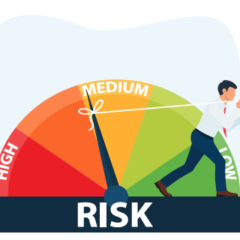Last updated on
The Clot Connection: Thrombosis, Heart Attack, and Stroke
Updated November 2020
Blood clots play a major role in myocardial infarction (MI), or heart attack. Over time, the coronary arteries can develop plaques—a buildup of cholesterol, fibrous tissue, and inflammatory cells—in a process called atherosclerosis. Smoking, high blood pressure, high cholesterol, and diabetes are risk factors for atherosclerosis; over time, they cause injury to the blood vessels and lead to more plaque formation. In some cases, these plaques become unstable and fracture, triggering the body to form a blood clot at that site. The blood clot may block the coronary artery and starve the heart muscle of oxygen and nutrients, resulting in a heart attack.
In deep vein thrombosis (DVT), blood clots develop in the leg or pelvis veins. Inflammation and underlying genetic factors likely predispose people to DVT. Other risk factors such as cancer or immobility also increase risk for DVT. If a portion of the DVT dislodges, it can travel through the veins and eventually reach the pulmonary arteries, becoming a pulmonary embolism (PE).
Blood clots also play a role in stroke. When the heart is in normal rhythm, blood flows briskly through each chamber. In a condition called atrial fibrillation (Afib), blood has more opportunity to pool in the top chambers of the heart. With less movement, blood is more prone to clotting. Once clots form, they can be pumped out of the heart and into the body’s arterial system. The arteries to the brain are some of the first pathways the blood reaches once it leaves the heart. A blood clot passing out of the heart and into these arteries can cause a stroke.
Aaron W. Aday, MD
Instructor in Medicine
Division of Cardiovascular Medicine
Vanderbilt University Medical Center
Do you have a question for the expert? Email [email protected]



